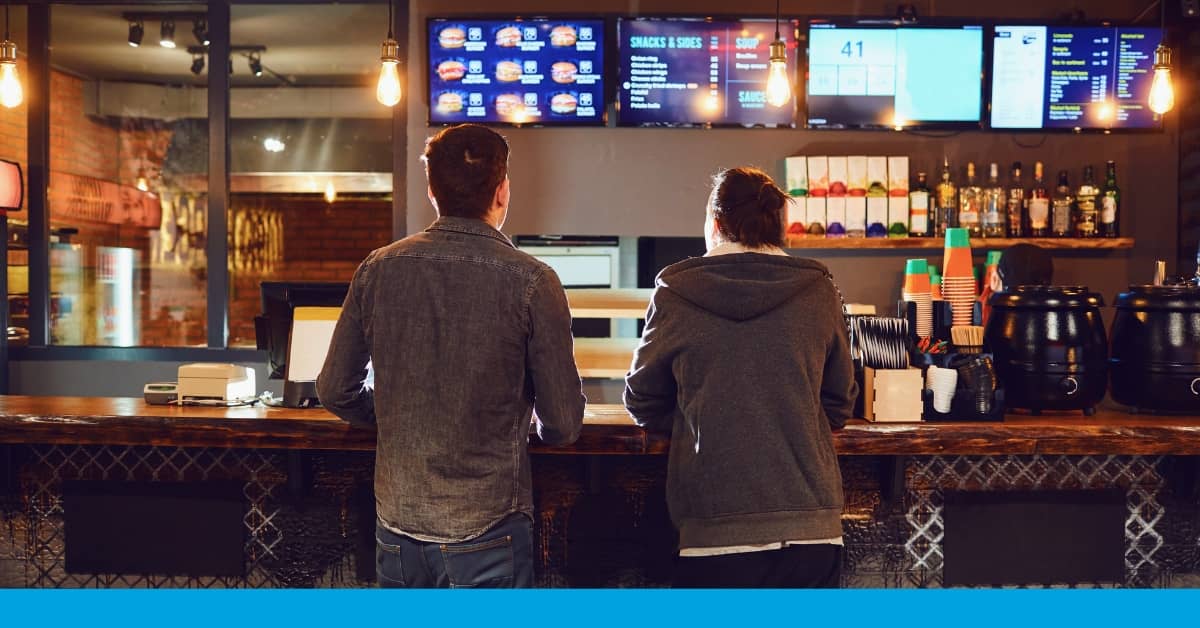How to Improve QSR Guest Experience with Data From the Field
With the restaurant industry facing many challenges, the big question remains: How can QSR brands improve guest experiences?

Businesses use mystery shopping as a valuable data collection method to evaluate and improve customer experience, product quality, operational efficiency, and more. The results of these evaluations are typically presented as mystery shopping scores.
But what do these scores represent? More importantly, how will mystery shopping results impact how brands plan and execute their operating standards?
Here's a breakdown of what mystery shopping scores mean and how they provide actionable insights for informed decision-making.
Mystery shopping scores are ratings that come from the evaluations of mystery shoppers. They typically represent the frequency of execution of a standard across different parts of the customer experience, such as:
When getting the data for mystery shopping, the results typically include:
Mystery shopping scores are looked at in two ways:
Here's an example: For 23 years, our Annual Drive-Thru Study has covered the same core brands, delivering a long history of providing the leading insights into drive-thru performance in the Quick-Serve Restaurant (QSR) industry.
One of the key areas evaluated is Order Accuracy. As you can see in the chart below, the brands included in the study are attributed an accuracy score based on the number of orders fulfilled accurately in this study. In this case, data is aggregated by brand and compared year over year.

Not only does this kind of data give actionable insights for the brands involved in the study, but it is also a helpful tool for other brands to use to benchmark their performance against these industry leaders.
Because mystery shopping typically measures execution against a standard, brands expect to see their locations achieving a mystery shopping score of 90% or higher. But what does this score really indicate?
In essence, mystery shopping scores tell how well a store's execution meets brand standards. Therefore, a score above 90% indicates that stores are performing as they should be.
Let's look at the results of the 2024 CSP - Intouch Insight Mystery Shop Study as an example.
This study evaluates various aspects of convenience stores, including everything from fuel pumps to food options to employee interactions. The top three brands achieved an overall mystery shopping score above 95%.
Such a high score demonstrates these brands' commitment not only to store-level execution but to customer service performance, too.
When planning the evaluation criteria for a mystery shopping program, a good starting point is to look for aspects of the business that are underperforming according to other sources, like customer feedback surveys and online reviews.
Decision-makers then can use the mystery shopping results to understand where operations fail to meet customer expectations. The insights gained can be used to set specific, measurable goals for improvement.
For example, if scores indicate slow service, a goal might be to reduce wait times by implementing new efficiency measures. If those don't work, leaders can further investigate:
Mystery shopping scores reflect many aspects of the customer experience. Here are the key factors that influence these scores:
Product Knowledge
It indicates a well-informed and trained staff, able to answer questions and provide recommendations. Low product knowledge scores may indicate a need for staff training.
A recent study conducted by our team on grocery stores showed that 4 out of 5 brands scored over 80% on providing a helpful recommendation, showing room for improvement in this sector.
Cleanliness
It evaluates the overall cleanliness of the store, including floors, counters, restrooms, lobby, and parking lot areas, and it can significantly impact scores and customer satisfaction.
Because things like cleanliness can be subjective, it's important to define the standard you are looking for. For example, in a recent study of 4 leading coffee chains, cleanliness was defined using the following scale:
In the case of this study, the overall cleanliness score was 87%, meaning 87% of locations visited had no garbage, and the floors were clean.
Speed of Service
It evaluates the time customers take from entering the store or placing an order to when they complete their transaction. Faster services lead not only to satisfied customers but also demonstrate that companies are operating efficiently.
Fast and convenient service is essential for quick-serve restaurants (QSR) and similar industries, so leaders in this sector should closely monitor this KPI.
Want to dive into the speed of service and other important metrics for the top 10 QSR chains? Download our 2023 Drive-Thru Study here.
Wait Times
This measures how long customers wait for assistance or service. Shorter wait times improve the experience with a brand since customers usually appreciate not having to wait long to receive the product or service they want.
Order Accuracy
Ensuring that customers receive exactly what they ordered is crucial. High accuracy in fulfilling orders boosts scores while avoiding revenue loss and frustrated customers.
Store Ambiance
The atmosphere, including lighting, music, decor, and layout, contributes to the customer experience. A well-designed and appealing environment can enhance scores, reflecting the brand promise and messaging.
Friendliness
Friendly and welcoming interactions with employees can lead to higher scores, reflecting positively on customer experiences.
Our 2023 Annual Drive-Thru Study showed that friendly service led to an 18% increase in order accuracy and an 84% increase in satisfaction. In addition, the service was 34 seconds faster than an unfriendly one.
It's important to note that mystery shopping does not assess customer perceptions of friendliness. Instead, mystery shopping evaluations are based on a set of criteria the brand defines when the program is designed. This ensures that the evaluation is impartial and based on specific, predetermined standards set by decision-makers.
Once leaders have a clear understanding of your mystery shopping scores, the next step is to use this information to drive improvements, such as employee training or employee recognition programs.
It is important to re-evaluate the mystery shopping program to keep it aligned with business objectives, customer demands, and industry trends. It'll help identify underperforming areas, explore new opportunities, and come up with new, relevant aspects to evaluate.
We empower leading brands to establish Mystery Shopping Programs to evaluate brand performance strategically, ensuring consistent execution of brand standards across all locations.
Want to learn more about Mystery Shopping and how it can help brands collect data-driven customer experience insights? Visit our  .
.

With the restaurant industry facing many challenges, the big question remains: How can QSR brands improve guest experiences?

Mystery shopping programs offer restaurant operators and managers a unique opportunity to see their business through a guest’s eyes. This powerful...

Imagine this: Leaders of a national chain gathered for their quarterly business review after a period of rapid expansion. The conversation started...